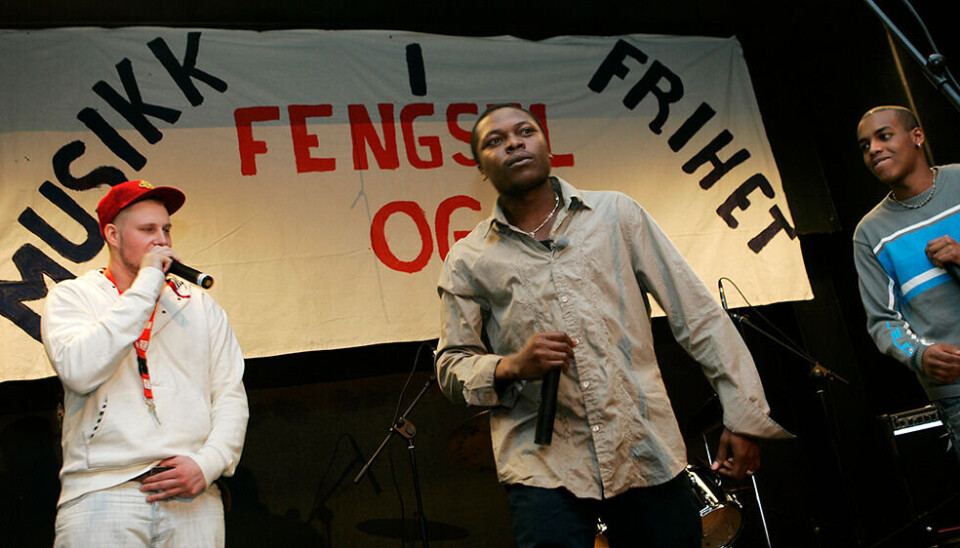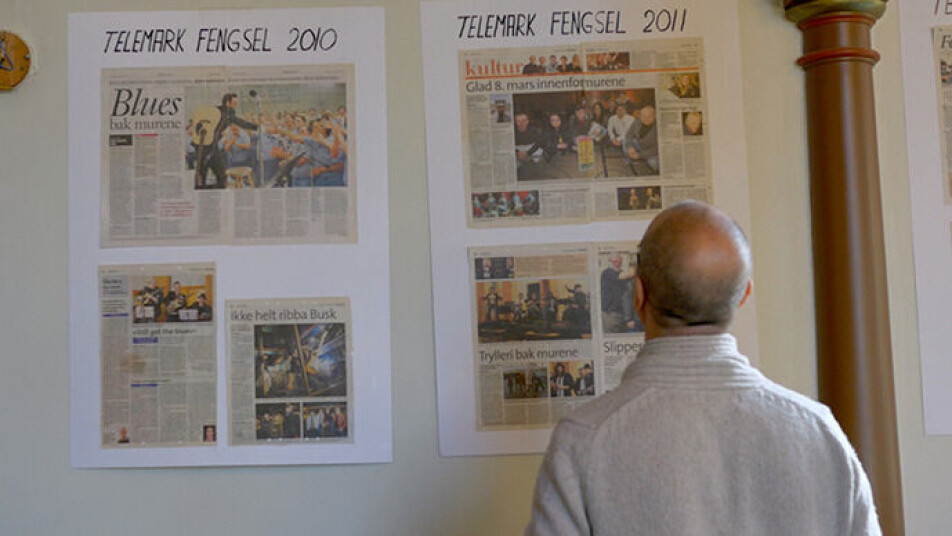THIS ARTICLE/PRESS RELEASE IS PAID FOR AND PRESENTED BY University of Oslo - read more

Music connects inmates in Norwegian prisons to the outside world
In Norwegian prisons, a cultural project that few know about is afoot. Music can become a lifeline when people enter back into society, according to musicologist.
When music researcher Áine Mangaoang started her PhD, she intended to write about pop music on the Internet. Then she came across a YouTube video in which 1,500 prison inmates in the Philippines were dancing to Michael Jackson.
“Was this real? How had this occurred? How did they manage to get so many people dancing together in a prison backyard? I was curious,” says the Irish-Filipino researcher.
The topic for her thesis changed. She spent three years exploring the video which had fascinated her. Music within prisons was to become Mangaoang's speciality.
Norway is leagues ahead
When Mangaoang came to Norway in 2016, it was natural to get to know the country through its prisons and its music. It turned out that Norway is leagues ahead.

“There is music within prisons in many countries. Yet in Norway, there are many local prisons where the inmates serve their sentence close to their home town. This may be something Norwegians take for granted, but this is not how it is everywhere else,” she says.
This also opens up more opportunities for music.
“Music becomes a part of the inmates’ connection to their local community. If they join a choir or a band, it can become a lifeline when they enter back into society," she says.
All in all, Mangaoang is excited about what she has seen in Norway. Her findings from the Philippines were more ambivalent: her thesis resulted in the prize-winning book Dangerous Mediations: Pop Music in a Philippine Prison Video.
In this, she wrote, among other things, that the dancing in the video was not voluntary: Many of the inmates were forced to take part.
“Music can be an effective tool to assert power,” she says.
Access to equipment varies
In Norwegian prisons, artists or groups from outside have occasionally performed concerts. Other times, the music is made on the inside; both the inmates and staff, as well as people from the outside, can take part.
For example, Trondheim Prison has a choir where staff at the music museum Rockheim, sing together with the inmates.
Several Norwegian prisons have very good music studios. One of these is the world-known Halden Prison, which has been called “the jewel in the crown” of the Norwegian prison system. In Halden, there is also a choir for the prison staff.
“Generally, a great deal of music is created within Norwegian prisons. But the access to studios and equipment varies. The small prisons may not offer the same facilities, but large prisons such as Bastøy Prison, Trondheim Prison and some penitentiaries in Western and Eastern Norway have good facilities. There, people can record music and create something unique," Mangaoang says.
Organisations help out
In Norway, there are also organisations working to get music into the prisons. One of these is Musikk i fengsel og frihet (MIFF - “Music in Prison and Freedom”): a nationwide offer of music training and activities during and after serving a sentence. The aim is to make the inmates better equipped at handling everyday life after being released.
Another organisation is Blues Factory AS, which offers music training to inmates, former convicts, adolescents who have problems with education and work, but also other course participants. Bjørn Andersen, the man behind this organisation, is also the coordinator of the Notodden Blues Festival’s stage for prison bands.
In ongoing research, Mangaoang compares Norwegian prisons with Irish and Icelandic prisons. Something that seems to set Norway apart is that the country has these types of organisations.
“They are doing a fantastic job. Among other things, they help organise bands for people who have been released so that they are not left to themselves but instead can keep making music,” says Mangaoang.

Concerts on the inside
At certain times throughout the year, Norwegian prisons are turned into music venues, where bands, choirs and orchestras from outside perform concerts. Sometimes it is the prisons that invite people, but other times it is the musicians themselves who ask to be invited.
“Such concerts are well produced, so even if the audience is relatively small, they get a high-quality musical experience. For inmates, getting together and experiencing a concert can be a form of social glue.”
In Norway, the basic idea is that the majority of inmates should return to society. Mangaoang thinks that music can help with this.
“This seems to be a large part of what music offers. It is a social thing. People can play together, learn to listen to each other, but they can also get to know people on the outside," she says.
“People care more about each other”
That music can become a lifeline when people return to society is a finding Mangaoang has not yet published, but it will come. Internationally, researchers, music teachers and activists have all pointed out the same thing.
Among others, the American researcher and activist Shana Redmond has written about how music can become a lifeline, a kind of escape.
In Pakistan, inmates have described music learning and various art courses as a lifeline.
In a study published in the journal Musicae Scientiae, Áine Mangaoang has interviewed people who have arranged music activities within Norwegian prisons.
The findings indicate that music within prisons can help those who take part care more about others.
“Both prison staff and others who facilitate music within prisons gain new perspectives. They think far more critically and with more nuance than before, for example, about how people end up in prison: i.e. that life is unfair, and that many events that are beyond people's control can make life take a certain direction," she says.
She adds that such insights are easy to come by when people meet each other and talk together.
“Many people from the outside said that by connecting with people in prison, they understood that this could just as easily have been themselves. When people play and sing together, the boundary between 'us' and 'them' disappears," Mangaoang says.
Not everyone is included
Nevertheless, Mangaoang’s study raises certain questions: It seems that not everyone gets the same opportunity. This applies particularly to women and foreign nationals.
Norwegian women's prisons are often older than other prisons. This fact affects what facilities are found there. In some places, such as in Trondheim prison, initiatives directed specifically at women aim to correct the lack of opportunity.
Kongsvinger prison is aimed specifically at foreign inmates, and here, no offer of music activities exists, according to Mangaoang's sources.
“Those who facilitate music within prisons understand music both as an embedded practice in many places and as a good that is unevenly distributed and practiced,” says Mangaoang.
The resources needed should not be taken for granted either, she points out.
“Organisations that facilitate music within prisons experience uncertain funding, and this means that such activities are difficult to plan," she says.
Reference:
Áine Mangaoang, "A reward rather than a right”: Facilitators’ perspectives on the place of music in Norwegian prison exceptionalism, Musicae Scientiae, vol. 25, 2021. DOI: 10.1177/10298649211014235

This article/press release is paid for and presented by the University of Oslo
This content is created by the University of Oslo's communication staff, who use this platform to communicate science and share results from research with the public. The University of Oslo is one of more than 80 owners of ScienceNorway.no. Read more here.
See more content from the University of Oslo:
-
A researcher has listened to 480 versions of Hitler's favourite music. This is what he found
-
Researcher: "AI weakens our judgement"
-
New, worrying trend among incels, according to researcher
-
Ship’s logs have shaped our understanding of the sea
-
New study: The dilemma of copyright in the Global South
-
How your lifestyle affects your risk of bowel cancer




































